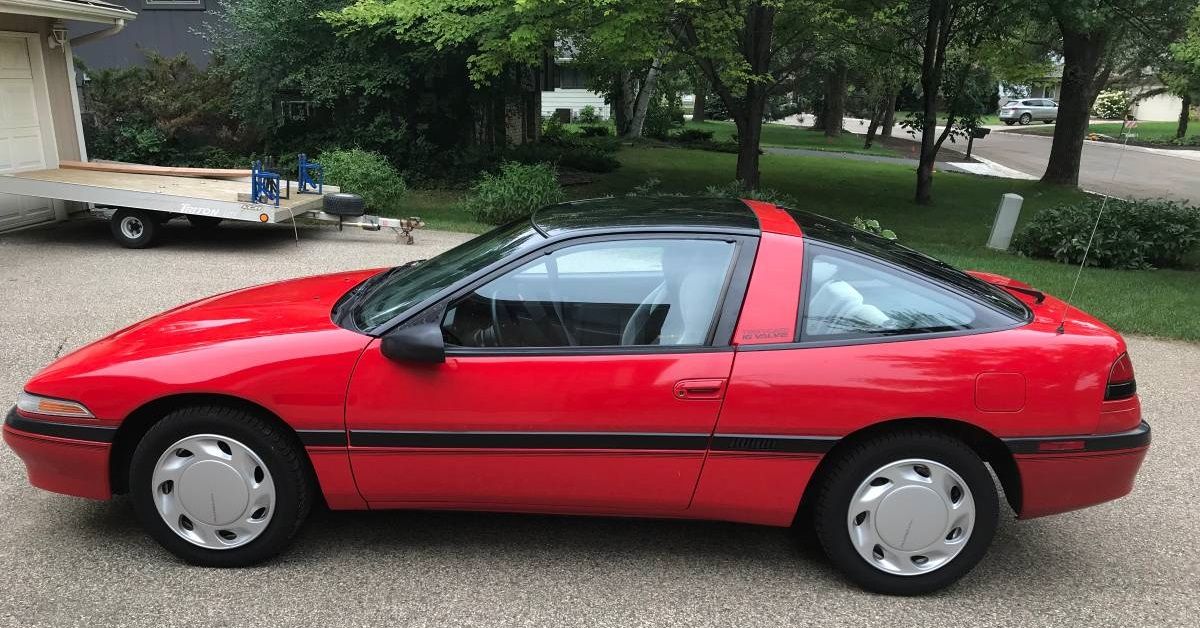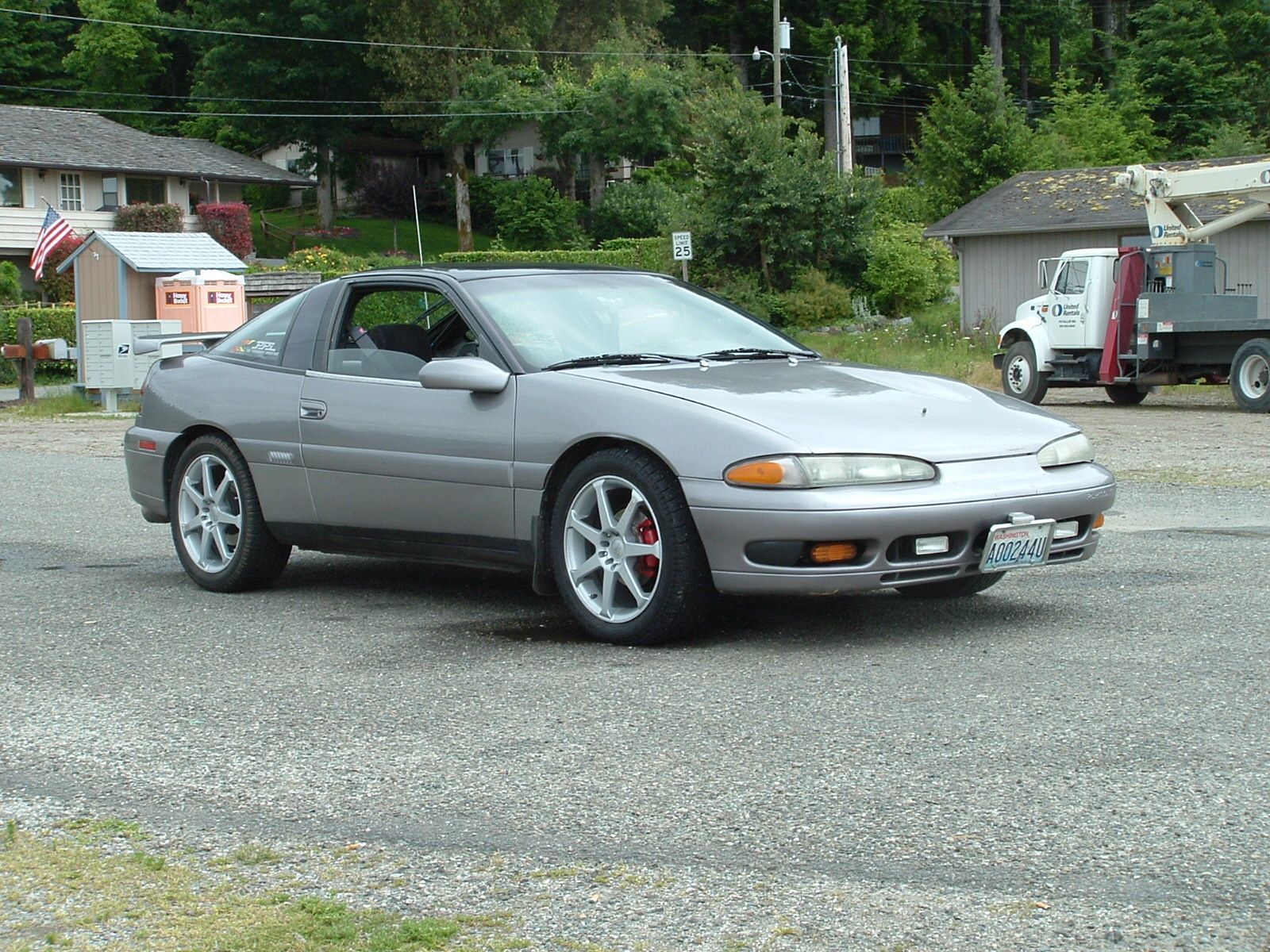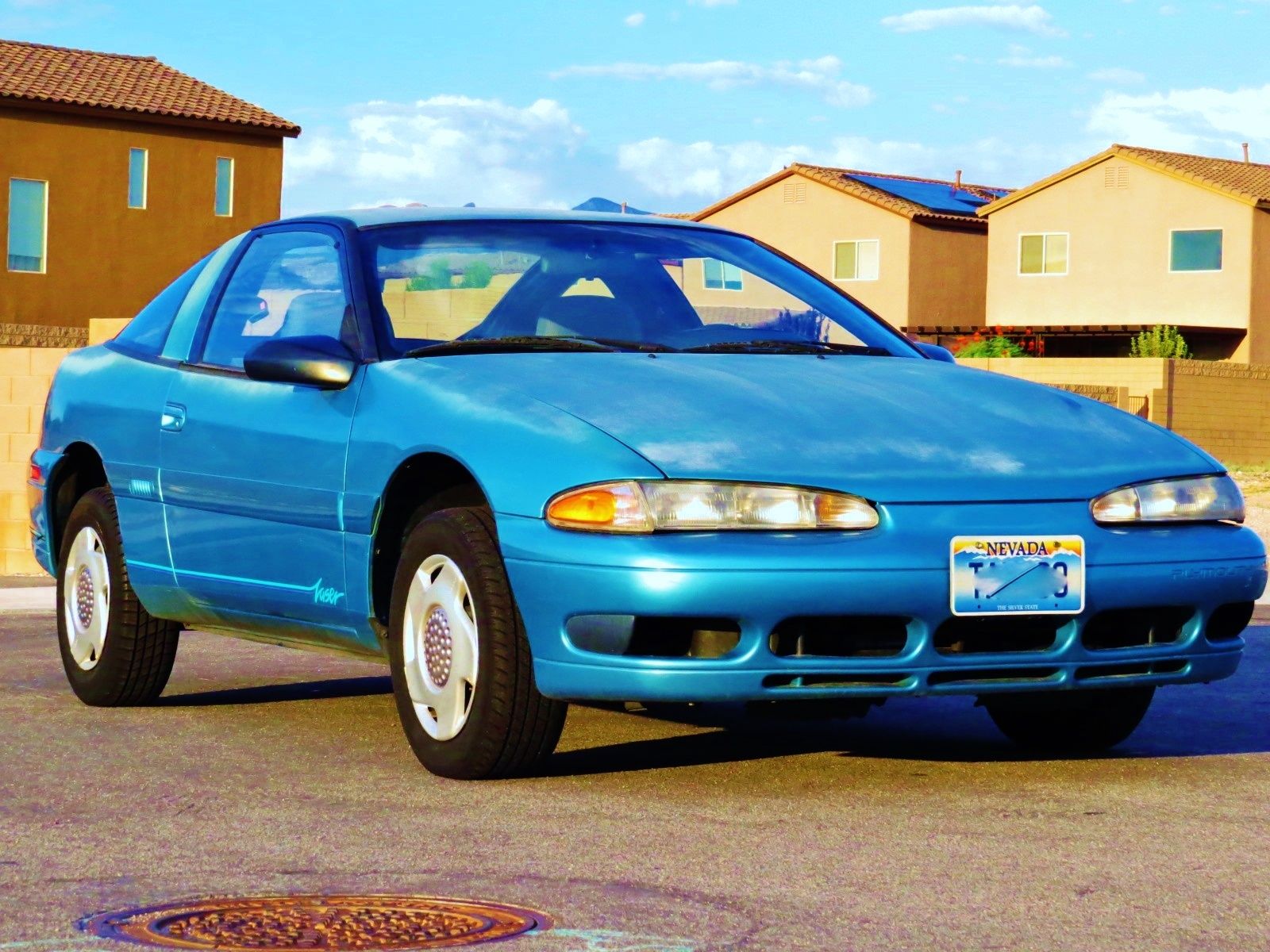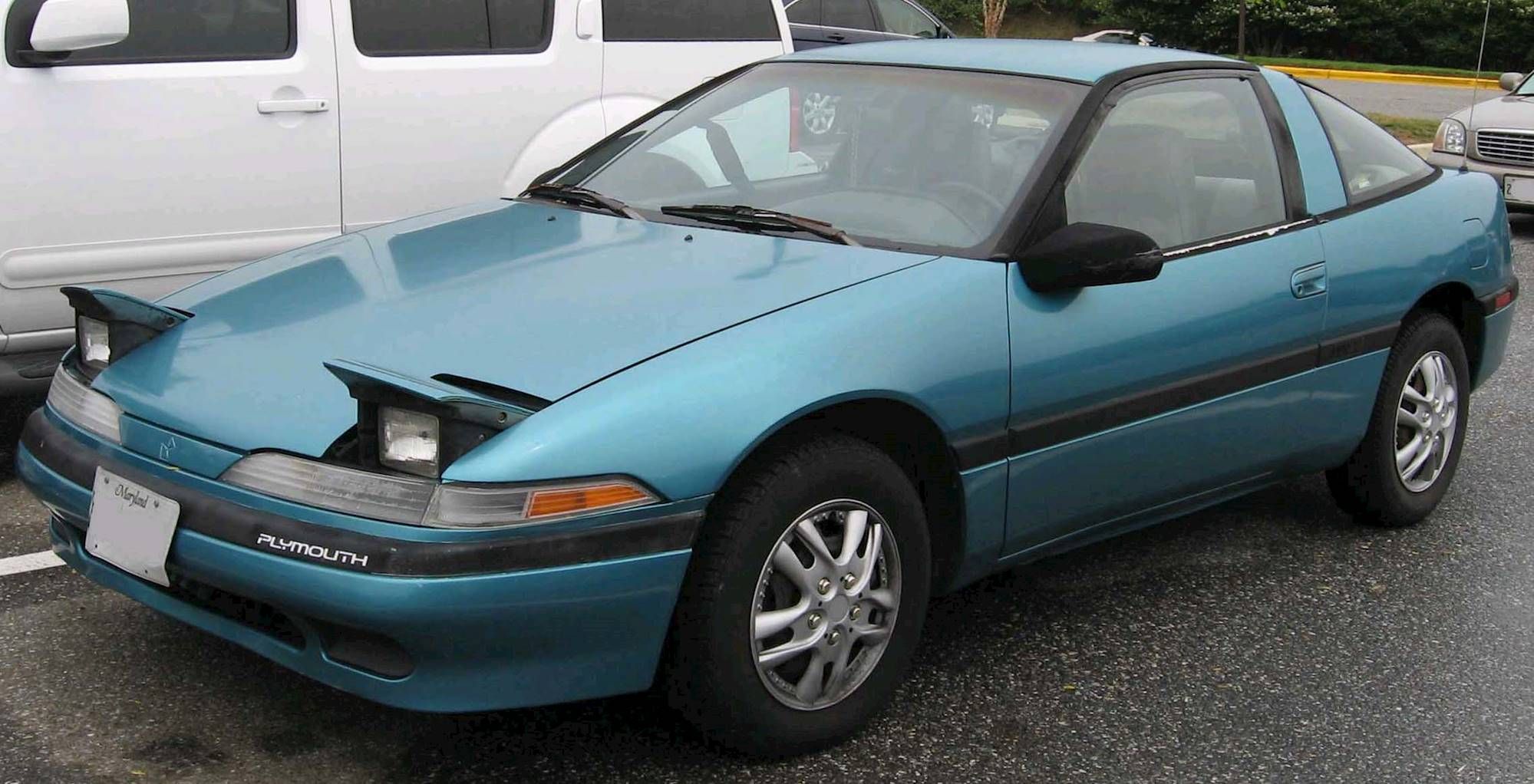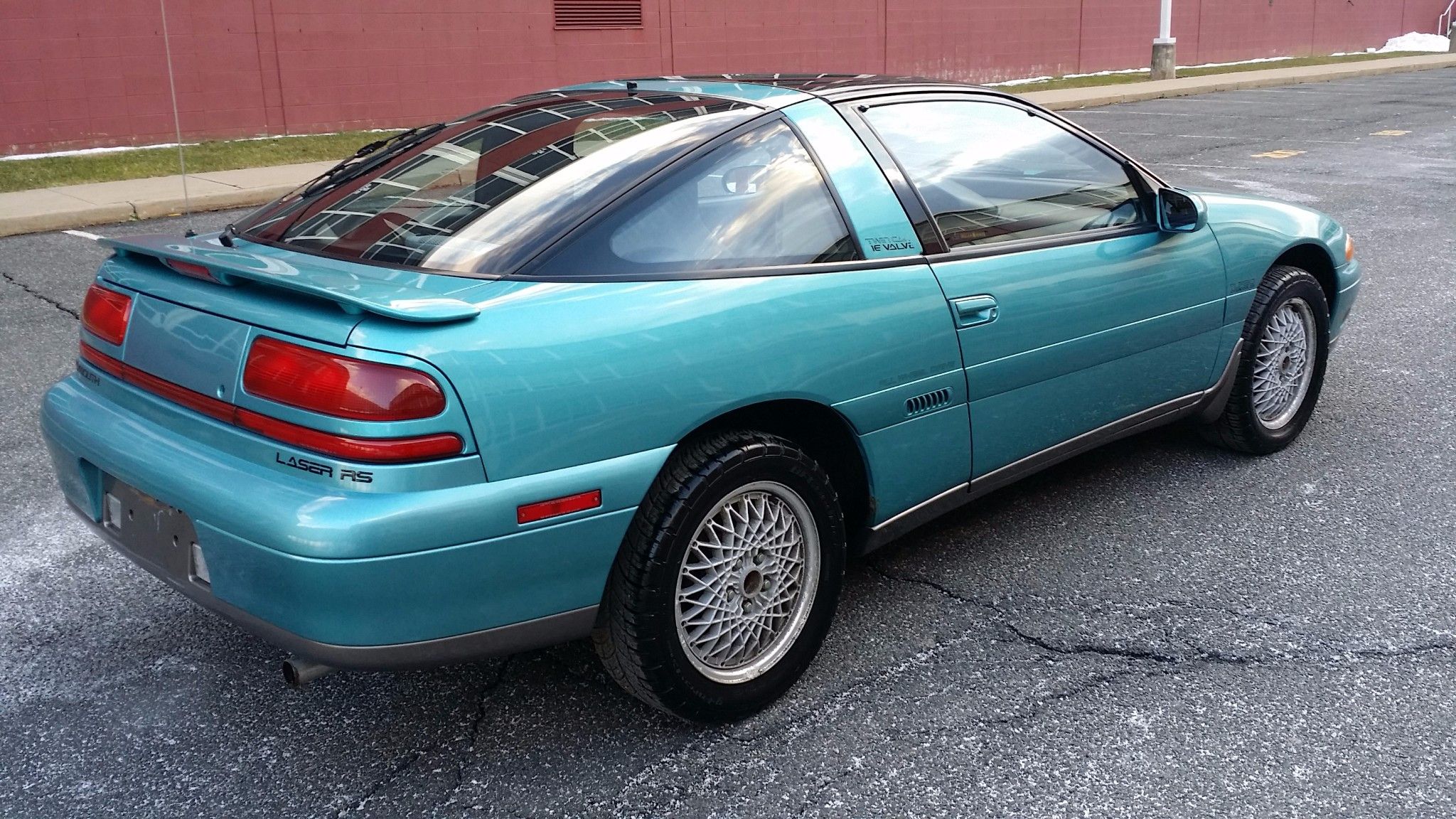The Plymouth Laser debuted in January 1989 as a sporty front-drive coupe. It had several variants, each of which had a different engine proportional to how fancy its corresponding model was. Plymouth, a division of Chrysler, even updated the Laser every year it was around, though it was only manufactured from 1989 to 1994. It even was known for being able to hit the drag strip. It could be modified, just like other Plymouth models could. The Plymouth Laser was built alongside the Eagle Talon and Mitsubishi Eclipse in Normal, Illinois under Diamond Star Motors.
Read on to find out more details about the Plymouth Laser's history, features, and complications.
Strong Engine With Annual Updates
The Laser had many notable engine characteristics, and it received many updates annually until its final year. The Plymouth Laser offered anti-lock brakes, all-wheel-drive, and turbo acceleration as options, and its appearance and internal physiology was similar to other model vehicles, such as the Eagle Talon and the Mitsubishi Eclipse. The Laser had a base engine that was 1.8-liter and a four-cylinder with a five-speed manual transmission.
However, with fancier variants came fancier engines. The Laser RS used a 135-horsepower, 2.0-liter twin-cam, four-cylinder engine. The Laser RS Turbo took these even further, with a turbocharged 2.0-liter rated at 190 horsepower.
Plymouth modified the Laser just a little bit for most of its annual updates. 1991 saw the addition of anti-lock brakes and optional automatic transmission. In 1992, minor cosmetic changes took the forefront (almost literally), but Plymouth debuted an all-wheel-drive model alongside the other types of Laser. Exposed aerodynamic headlamps became the new feature instead of the old style that was previously hidden.
Sadly, 1993 was the last big change for the Laser. All variants had an automatic transmission offered as an option, lowering the horsepower of turbo models to 180. Any Laser that was an upgrade from the base model could have anti-lock brakes installed.
Plymouth knew the 1992 Laser would be the last annual generation produced, so updates were not a priority; only minuscule detail changes were made. Still, there tends to be an aftermarket for used Plymouth models, and a lot of them can be quite affordable.
Price & Specs
The Laser has some interesting specs and a wide price range. The Laser was built alongside the Eagle Talon and Mitsubishi Eclipse in the Diamond Star Motors factory, located in Normal, Illinois.
Diamond Star Motors was a joint venture between Mitsubishi and Plymouth, hence both their models being constructed there. The Laser was known for being moderately priced and delivering solid enough performance, as it could even accelerate faster than the initial round of Porsche 928 models.
In regards to speed, the Laser could reach 60 MPH in only 6.6 seconds, and it could drive a fourth of a mile at 93 MPH in only 15.1 seconds. The gear shifter was known to move fluidly and could hit a top speed of approximately 140 MPH.
The Laser was mainly front-wheel-drive, at least at first, and it sold for $13,000–14,500. Its fuel economy was 24 MPG, and 2650–2750 lbs was its curb weight. Gauges were deliberately placed at eye level for easier driving, ensuring the driver could get an accurate reading on water temperature, oil pressure, and the tachometer.
First Product Of Diamond-Star Motors
When Diamond-Star Motors was created as a joint venture, the Laser was one of the first products to be offered. Thanks to Japan's voluntary import quota with the United States, Mitsubishi and Chrysler both producing cars together in America would enable both to sell more vehicles together than they could if they were working separately.
As mentioned before, the Eclipse, Laser, and Talon were the first round of coupes constructed at the Diamond Star Motors factory. These three models shared similar mechanical options, as they were all derived from Chrysler’s D platform. However, the cosmetic and exterior details, such as shape, color, bumpers, taillights, and wheels, would vary among the Laser and the other models.
The Laser was initially built with pop-up headlights and had six bolts in the engine that connected the flywheel to the crankshaft. A notable feature of the Laser is that it combined all-wheel-drive and a turbocharged engine while still remaining affordable.
And So It Ends
Ultimately, thanks to several factors, the production of the Laser was discontinued. First of all, sales of the Laser were dismal compared to those of the Talon and Eclipse. Because the Laser was made via badge engineering, its competition was, naturally, cars made from an identical platform, allowing for a fairer comparison.
Further, Eagle and Plymouth were both owned by Chrysler, putting the Laser and Talon in more direct competition than with the Eclipse. The Laser was marketed as the value-oriented, mainstream brand, whereas the Talon was marketed as the performance brand, necessitating more promotional advertising for the Talon.
On top of all that, the Laser was a complete deviation from anything else Plymouth offered at the time, as the emphasis was on K-car-derived cars and minivans, not coupes like the Laser.
The final nail in the coffin was the arrival of Plymouth's 1995 Neon, the successor to the Laser. The Neon sold much better and successfully replaced the Laser, while the Talon and Eclipse benefited from an extensive redesign in 1995. The Talon, and the entire Eagle brand, were discontinued in 1998, while the Eclipse did not retire until 2012.
Sources: consumerguide.com, caranddriver.com, allpar.com, amazon.com, hagerty.com,

